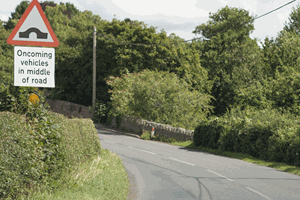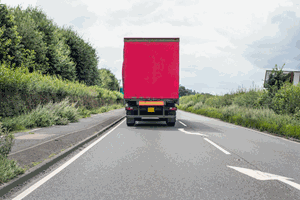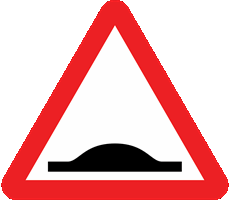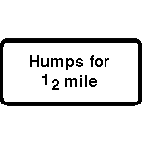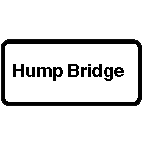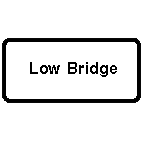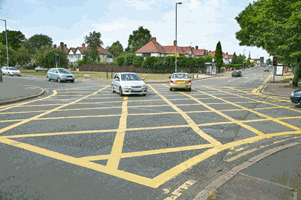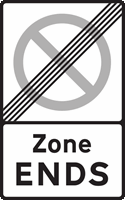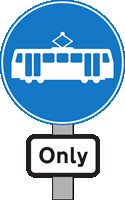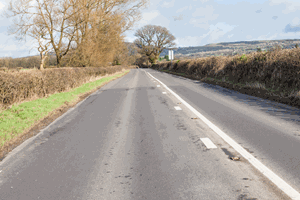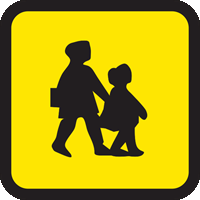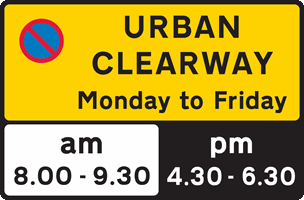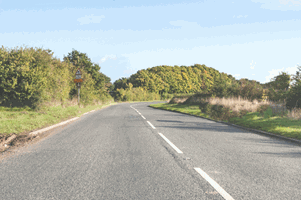You have 57 minutes to answer 50 multiple choice motorcycle theory test questions. You need to score at least 86% 43 out of 50 to pass the test. Answers may be checked after each question by clicking the 'check answer' button or you can wait until the end of the test to review your final score. Best of luck!
Motorcycle Theory Test Practice (2025)
Test Quick View
Click question box to reveal the correct answer. You can print these questions out by clicking the printer icon.
1. A learner driver begins to emerge into your path from a side road on the left. What should you do?
Mark one answer
B
C
D
Correct Answer: A
Explanation: You should always be looking for vehicles emerging from side roads as you approach them. If you see another vehicle begin to emerge into your path, be ready to slow down or stop if necessary.
Explanation: You should always be looking for vehicles emerging from side roads as you approach them. If you see another vehicle begin to emerge into your path, be ready to slow down or stop if necessary.
Correct Answer: A
Explanation: Learner drivers might take longer to react to traffic situations, so be patient and give them time. Don't unnerve them by riding close behind or showing signs of impatience.
Explanation: Learner drivers might take longer to react to traffic situations, so be patient and give them time. Don't unnerve them by riding close behind or showing signs of impatience.
B
C
D
Correct Answer: C
Explanation: Don't risk losing any luggage while riding: it could fall into the path of following vehicles and cause danger. It's an offence to travel with an insecure load.
Explanation: Don't risk losing any luggage while riding: it could fall into the path of following vehicles and cause danger. It's an offence to travel with an insecure load.
4. You've just ridden through a flood. What should you test when you're clear of the water?
Mark one answer
B
C
D
Correct Answer: A
Explanation: Water can make your brakes less effective. If they've been affected, ride slowly while gently applying them until normal braking is restored.
Explanation: Water can make your brakes less effective. If they've been affected, ride slowly while gently applying them until normal braking is restored.
B
C
D
Correct Answer: B
Explanation: Oil and rubber can build up on the road during long spells of dry weather. When it rains, this can make the road surface very slippery.
Explanation: Oil and rubber can build up on the road during long spells of dry weather. When it rains, this can make the road surface very slippery.
Correct Answer: D
Explanation: A pillion passenger shouldn't give signals or look around for you - that's your responsibility as the rider. If your passenger has never been on a motorcycle before, make sure they know that they need to lean with you when going around bends.
Explanation: A pillion passenger shouldn't give signals or look around for you - that's your responsibility as the rider. If your passenger has never been on a motorcycle before, make sure they know that they need to lean with you when going around bends.
Correct Answer: C
Explanation: Carrying a heavy load in your top box could make your motorcycle unstable, because the weight is high up and at the very back of the machine.
Explanation: Carrying a heavy load in your top box could make your motorcycle unstable, because the weight is high up and at the very back of the machine.
Correct Answer: D
Explanation: A motorcycle is most stable when it's upright and moving in a straight line. This is the best time to brake. With independent front and rear brakes, both brakes should be used, with the front brake being applied just before the rear brake.
Explanation: A motorcycle is most stable when it's upright and moving in a straight line. This is the best time to brake. With independent front and rear brakes, both brakes should be used, with the front brake being applied just before the rear brake.
Correct Answer: D
Explanation: Even a small amount of alcohol will impair a person's judgement. It can increase confidence to a point where a person's behaviour may become 'out of character'. Someone who normally behaves sensibly may take risks and could endanger themselves and others. Don't drink and ride, or accept a lift from anyone who's been drinking.
Explanation: Even a small amount of alcohol will impair a person's judgement. It can increase confidence to a point where a person's behaviour may become 'out of character'. Someone who normally behaves sensibly may take risks and could endanger themselves and others. Don't drink and ride, or accept a lift from anyone who's been drinking.
Correct Answer: B
Explanation: Catalytic converters reduce the toxic and polluting gases given out by the engine. Never use leaded or lead-replacement petrol in a motorcycle with a catalytic converter; even one tankful can permanently damage the system.
Explanation: Catalytic converters reduce the toxic and polluting gases given out by the engine. Never use leaded or lead-replacement petrol in a motorcycle with a catalytic converter; even one tankful can permanently damage the system.
Correct Answer: B
Explanation: The purpose of a CBT course is to teach you basic theory and practical skills before you ride on the road, on your own, for the first time. CBT courses can only be given by approved training bodies (ATBs).
Explanation: The purpose of a CBT course is to teach you basic theory and practical skills before you ride on the road, on your own, for the first time. CBT courses can only be given by approved training bodies (ATBs).
12. You've been waiting for some time to make a right turn into a side road. What should you do just before you make the turn?
Mark one answer
B
C
D
Correct Answer: A
Explanation: Remember your lifesaver glance before you start to turn. If you've been waiting for some time and a queue has built up behind you, a vehicle further back may try to overtake. In this situation, it's especially important to look out for other motorcycles, which may be approaching at speed.
Explanation: Remember your lifesaver glance before you start to turn. If you've been waiting for some time and a queue has built up behind you, a vehicle further back may try to overtake. In this situation, it's especially important to look out for other motorcycles, which may be approaching at speed.
Correct Answer: B
Explanation: The vehicle handbook will explain when it's recommended that you increase tyre pressures - for example, when you're carrying extra weight from a passenger or a heavy load.
Explanation: The vehicle handbook will explain when it's recommended that you increase tyre pressures - for example, when you're carrying extra weight from a passenger or a heavy load.
14. A friend offers you a second-hand safety helmet for you to use. Why may this be a bad idea?
Mark one answer

B
C
D
Correct Answer: B
Explanation: A second-hand helmet may look in good condition but it could have received damage that isn't visible externally. A damaged helmet could be unreliable in a crash. Don't take the risk.
Explanation: A second-hand helmet may look in good condition but it could have received damage that isn't visible externally. A damaged helmet could be unreliable in a crash. Don't take the risk.
Correct Answer: C
Explanation: Cables will stretch with use and need checking and adjusting regularly. They also need lubricating to prevent friction and wear of the cables and pivots. Don't over-adjust brake cables or the brakes will bind, causing increased fuel consumption, risk of skidding and risk of the brakes overheating.
Explanation: Cables will stretch with use and need checking and adjusting regularly. They also need lubricating to prevent friction and wear of the cables and pivots. Don't over-adjust brake cables or the brakes will bind, causing increased fuel consumption, risk of skidding and risk of the brakes overheating.
Correct Answer: C
Explanation: Various factors - such as weather and road conditions, vehicle condition and loading - affect how long it takes you to stop. You also need to add reaction time to this. The overall stopping distance at 50 mph includes a thinking distance of 15 metres (the reaction time before braking starts) plus your braking distance of 38 metres, giving a typical overall stopping distance of 53 metres (175 feet) in good conditions.
Explanation: Various factors - such as weather and road conditions, vehicle condition and loading - affect how long it takes you to stop. You also need to add reaction time to this. The overall stopping distance at 50 mph includes a thinking distance of 15 metres (the reaction time before braking starts) plus your braking distance of 38 metres, giving a typical overall stopping distance of 53 metres (175 feet) in good conditions.
17. You aren't sure whether your cough medicine will affect your ability to ride safely. What should you do?
Mark one answer
B
C
D
Correct Answer: B
Explanation: If you're taking medicine or drugs prescribed by your doctor, check to make sure they won't make you drowsy. If you forget to ask when you're at the surgery, check with your pharmacist.
Explanation: If you're taking medicine or drugs prescribed by your doctor, check to make sure they won't make you drowsy. If you forget to ask when you're at the surgery, check with your pharmacist.
Correct Answer: C
Explanation: Overconfidence, lack of experience and poor judgement can cause a motorcyclist to make poor decisions, which can lead to a collision. It's just as important to make sure you have the right attitude and self-awareness as a rider as it is to develop skilful riding techniques.
Explanation: Overconfidence, lack of experience and poor judgement can cause a motorcyclist to make poor decisions, which can lead to a collision. It's just as important to make sure you have the right attitude and self-awareness as a rider as it is to develop skilful riding techniques.
Correct Answer: D
Explanation: You should slow down and be cautious. The bridge is narrow and there may not be enough room for you to pass an oncoming vehicle at this point. Also, there's no footpath, so be aware of pedestrians in the road.
Explanation: You should slow down and be cautious. The bridge is narrow and there may not be enough room for you to pass an oncoming vehicle at this point. Also, there's no footpath, so be aware of pedestrians in the road.
Correct Answer: D
Explanation: Staying back will increase your view of the road ahead. This will help you to see any hazards that might occur and give you more time to react.
Explanation: Staying back will increase your view of the road ahead. This will help you to see any hazards that might occur and give you more time to react.
21. You're in a one-way street and want to turn right. There are two lanes. Where should you position your vehicle?
Mark one answer
B
C
D
Correct Answer: C
Explanation: When you're in a one-way street and want to turn right, you should take up a position in the right-hand lane. This will allow other road users, not wishing to turn, to pass on the left. Indicate your intention and take up the correct position in good time.
Explanation: When you're in a one-way street and want to turn right, you should take up a position in the right-hand lane. This will allow other road users, not wishing to turn, to pass on the left. Indicate your intention and take up the correct position in good time.
Correct Answer: D
Explanation: You may have to pull forward slowly until you can see up and down the road. Be aware that the traffic approaching the junction can't see you either. If you don't know that it's clear, don't go.
Explanation: You may have to pull forward slowly until you can see up and down the road. Be aware that the traffic approaching the junction can't see you either. If you don't know that it's clear, don't go.
23. A driver pulls out of a side road in front of you, causing you to brake hard. What should you do?
Mark one answer
B
C
D
Correct Answer: B
Explanation: Be tolerant if a vehicle emerges and you have to brake quickly. Anyone can make a mistake, so don't react aggressively. Be alert where there are side roads and be especially careful where there are parked vehicles, because these can make it difficult for emerging drivers to see you.
Explanation: Be tolerant if a vehicle emerges and you have to brake quickly. Anyone can make a mistake, so don't react aggressively. Be alert where there are side roads and be especially careful where there are parked vehicles, because these can make it difficult for emerging drivers to see you.
Correct Answer: A
Explanation: Toucan crossings are shared by pedestrians and cyclists, who are permitted to cycle across. They're shown the green light together. The signals are push-button-operated and there's no flashing amber phase.
Explanation: Toucan crossings are shared by pedestrians and cyclists, who are permitted to cycle across. They're shown the green light together. The signals are push-button-operated and there's no flashing amber phase.
25. What should you do when you see two elderly pedestrians about to cross the road ahead?
Mark one answer
B
C
D
Correct Answer: A
Explanation: Older people may have impaired hearing, vision, concentration and judgement. They may also walk slowly and so could take a long time to cross the road.
Explanation: Older people may have impaired hearing, vision, concentration and judgement. They may also walk slowly and so could take a long time to cross the road.
Correct Answer: C
Explanation: Pedestrians and riders on two wheels can be harder to see than other road users. Make sure you look for them, especially at junctions. Effective observation, coupled with appropriate action, can save lives.
Explanation: Pedestrians and riders on two wheels can be harder to see than other road users. Make sure you look for them, especially at junctions. Effective observation, coupled with appropriate action, can save lives.
27. You're approaching a roundabout. There are horses just ahead of you. What should you do?
Mark one answer
B
C
D
Correct Answer: B
Explanation: Horse riders often keep to the outside of the roundabout even if they're turning right. Give them plenty of room and remember that they may have to cross lanes of traffic.
Explanation: Horse riders often keep to the outside of the roundabout even if they're turning right. Give them plenty of room and remember that they may have to cross lanes of traffic.
28. You're following a lorry on a wet road. What should you do when spray makes it difficult to see the road ahead?
Mark one answer
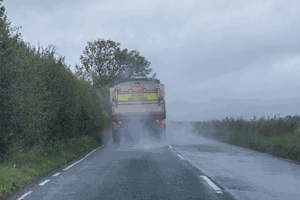
B
C
D
Correct Answer: A
Explanation: Large vehicles throw up a lot of spray when it's wet. This makes it difficult for following drivers to see the road ahead. You'll be able to see more by dropping back further, out of the spray. This will also increase your separation distance, giving you more room to stop if you have to.
Explanation: Large vehicles throw up a lot of spray when it's wet. This makes it difficult for following drivers to see the road ahead. You'll be able to see more by dropping back further, out of the spray. This will also increase your separation distance, giving you more room to stop if you have to.
Correct Answer: A
Explanation: Road humps are used to slow down traffic. They're found in places where there are often pedestrians, such as
Explanation: Road humps are used to slow down traffic. They're found in places where there are often pedestrians, such as
- shopping areas
- near schools
- residential areas.
Correct Answer: A
Explanation: Clearways are in place so that traffic can flow without the obstruction of parked vehicles. Just one parked vehicle can cause an obstruction for all other traffic. You mustn't stop where a clearway is in force, not even to pick up or set down passengers.
Explanation: Clearways are in place so that traffic can flow without the obstruction of parked vehicles. Just one parked vehicle can cause an obstruction for all other traffic. You mustn't stop where a clearway is in force, not even to pick up or set down passengers.
Correct Answer: A
Explanation: The purpose of yellow box markings is to keep junctions clear of queuing traffic. You may only wait in the marked area when you're turning right and your exit lane is clear but you can't complete the turn because of oncoming traffic or other traffic waiting to turning right.
Explanation: The purpose of yellow box markings is to keep junctions clear of queuing traffic. You may only wait in the marked area when you're turning right and your exit lane is clear but you can't complete the turn because of oncoming traffic or other traffic waiting to turning right.
Correct Answer: C
Explanation: Even though you've left the restricted area, make sure that you park where you won't endanger other road users or cause an obstruction.
Explanation: Even though you've left the restricted area, make sure that you park where you won't endanger other road users or cause an obstruction.
Correct Answer: D
Explanation: Take extra care when you encounter trams. Look out for road markings and signs that alert you to them. Modern trams are very quiet and you may not hear them approaching.
Explanation: Take extra care when you encounter trams. Look out for road markings and signs that alert you to them. Modern trams are very quiet and you may not hear them approaching.
Correct Answer: C
Explanation: It will take up to ten times longer to stop when it's icy. Where there's a risk of icy conditions, you need to be aware of this and take extra care. If you think the road may be icy, don't brake or steer harshly, as your tyres could lose their grip on the road.
Explanation: It will take up to ten times longer to stop when it's icy. Where there's a risk of icy conditions, you need to be aware of this and take extra care. If you think the road may be icy, don't brake or steer harshly, as your tyres could lose their grip on the road.
Correct Answer: C
Explanation: You mustn't park or stop on a road marked with double white lines (even where one of the lines is broken) except to pick up or set down passengers.
Explanation: You mustn't park or stop on a road marked with double white lines (even where one of the lines is broken) except to pick up or set down passengers.
Correct Answer: D
Explanation: Watch out for children crossing the road from the other side of the bus.
Explanation: Watch out for children crossing the road from the other side of the bus.
37. You keep well back while waiting to overtake a large vehicle. What should you do if a car moves into the gap?
Mark one answer
B
C
D
Correct Answer: A
Explanation: Sometimes your separation distance is shortened by a driver moving into the gap you've allowed. When this happens, react positively, stay calm and drop further back to re-establish a safe following distance.
Explanation: Sometimes your separation distance is shortened by a driver moving into the gap you've allowed. When this happens, react positively, stay calm and drop further back to re-establish a safe following distance.
Correct Answer: C
Explanation: Urban clearways are provided to keep traffic flowing at busy times. You may stop only briefly to set down or pick up passengers. Times of operation will vary from place to place, so always check the signs.
Explanation: Urban clearways are provided to keep traffic flowing at busy times. You may stop only briefly to set down or pick up passengers. Times of operation will vary from place to place, so always check the signs.
Correct Answer: C
Explanation: The centre of the road is usually marked by a broken white line, with lines that are shorter than the gaps. When the lines become longer than the gaps, this is a hazard warning line. Look well ahead for these, especially when you're planning to overtake or turn off.
Explanation: The centre of the road is usually marked by a broken white line, with lines that are shorter than the gaps. When the lines become longer than the gaps, this is a hazard warning line. Look well ahead for these, especially when you're planning to overtake or turn off.
40. Other drivers may sometimes flash their headlights at you. In which situation are they allowed to do this?
Mark one answer
B
C
D
Correct Answer: D
Explanation: If other drivers flash their headlights, this isn't a signal to show priority. The flashing of headlights has the same meaning as sounding the horn: it's a warning of their presence.
Explanation: If other drivers flash their headlights, this isn't a signal to show priority. The flashing of headlights has the same meaning as sounding the horn: it's a warning of their presence.
41. You're following a large vehicle. Why should you stay a safe distance behind it?
Mark one answer
B
C
D
Correct Answer: A
Explanation: If you're following a large vehicle but are so close to it that you can't see its exterior mirrors, the driver won't be able to see you. Keeping well back will also allow you to see the road ahead by looking past on either side of the large vehicle.
Explanation: If you're following a large vehicle but are so close to it that you can't see its exterior mirrors, the driver won't be able to see you. Keeping well back will also allow you to see the road ahead by looking past on either side of the large vehicle.
42. You think the driver of the vehicle in front has forgotten to cancel their right indicator. What should you do?
Mark one answer
B
C
D
Correct Answer: D
Explanation: Be cautious and don't attempt to overtake. The driver may be unsure of the location of a junction and may turn suddenly.
Explanation: Be cautious and don't attempt to overtake. The driver may be unsure of the location of a junction and may turn suddenly.
Correct Answer: D
Explanation: The white light shows that trams must stop. The green light shows that other vehicles can go if the way is clear. Trams are being introduced into more cities, so you're likely to come across them and you should learn which signs apply to them.
Explanation: The white light shows that trams must stop. The green light shows that other vehicles can go if the way is clear. Trams are being introduced into more cities, so you're likely to come across them and you should learn which signs apply to them.
B
C
D
Correct Answer: A
Explanation: Wet weather will affect the time it takes for you to stop and can affect your control. Your speed should allow you to stop safely and in good time. If another vehicle pulls into the gap you've left, ease back until you've regained your stopping distance.
Explanation: Wet weather will affect the time it takes for you to stop and can affect your control. Your speed should allow you to stop safely and in good time. If another vehicle pulls into the gap you've left, ease back until you've regained your stopping distance.
Correct Answer: A
Explanation: This road marking means you should give way to traffic on the main road. It might not be used at junctions where there isn't much traffic. However, if there's a double broken line across the junction, the 'give way' rules still apply.
Explanation: This road marking means you should give way to traffic on the main road. It might not be used at junctions where there isn't much traffic. However, if there's a double broken line across the junction, the 'give way' rules still apply.
Correct Answer: D
Explanation: Congestion can be reduced by keeping traffic at a constant speed. At busy times, maximum speed limits are displayed on overhead gantries. These can be varied quickly, depending on the amount of traffic. By keeping to a constant speed on busy sections of motorway, overall journey times are normally improved.
Explanation: Congestion can be reduced by keeping traffic at a constant speed. At busy times, maximum speed limits are displayed on overhead gantries. These can be varied quickly, depending on the amount of traffic. By keeping to a constant speed on busy sections of motorway, overall journey times are normally improved.
47. An injured person has been placed in the recovery position. They're unconscious but breathing normally. What else should be done?
Mark one answer
B
C
D
Correct Answer: A
Explanation: After a casualty has been placed in the recovery position, make sure their airway remains open and monitor their condition until medical help arrives. Where possible, don't move a casualty unless there's further danger.
Explanation: After a casualty has been placed in the recovery position, make sure their airway remains open and monitor their condition until medical help arrives. Where possible, don't move a casualty unless there's further danger.
Correct Answer: A
Explanation: If you're the first to arrive at a crash scene, the first concerns are the risk of further collision and fire. Ensuring that vehicle engines are switched off will reduce the risk of fire. Use hazard warning lights so that other traffic knows there's a need for caution. Make sure the emergency services are contacted; don't assume this has already been done.
Explanation: If you're the first to arrive at a crash scene, the first concerns are the risk of further collision and fire. Ensuring that vehicle engines are switched off will reduce the risk of fire. Use hazard warning lights so that other traffic knows there's a need for caution. Make sure the emergency services are contacted; don't assume this has already been done.
49. At an incident, someone is suffering from severe burns. What should you do to help them?
Mark one answer
B
C
D
Correct Answer: C
Explanation: Your priority is to cool the burns with a clean, cool, non-toxic liquid, preferably water. Its coolness will help take the heat out of the burns and relieve the pain. Keep the wound doused for at least 10 minutes. If blisters appear, don't attempt to burst them, as this could lead to infection.
Explanation: Your priority is to cool the burns with a clean, cool, non-toxic liquid, preferably water. Its coolness will help take the heat out of the burns and relieve the pain. Keep the wound doused for at least 10 minutes. If blisters appear, don't attempt to burst them, as this could lead to infection.
50. A collision has just happened. An injured person is lying in a busy road. What's the first thing you should do to help?
Mark one answer
B
C
D
Correct Answer: D
Explanation: The most immediate danger is further collisions and fire. You could warn other traffic by switching on hazard warning lights, displaying an advance warning triangle or sign (but not on a motorway), or by any other means that doesn't put you or others at risk.
Explanation: The most immediate danger is further collisions and fire. You could warn other traffic by switching on hazard warning lights, displaying an advance warning triangle or sign (but not on a motorway), or by any other means that doesn't put you or others at risk.


